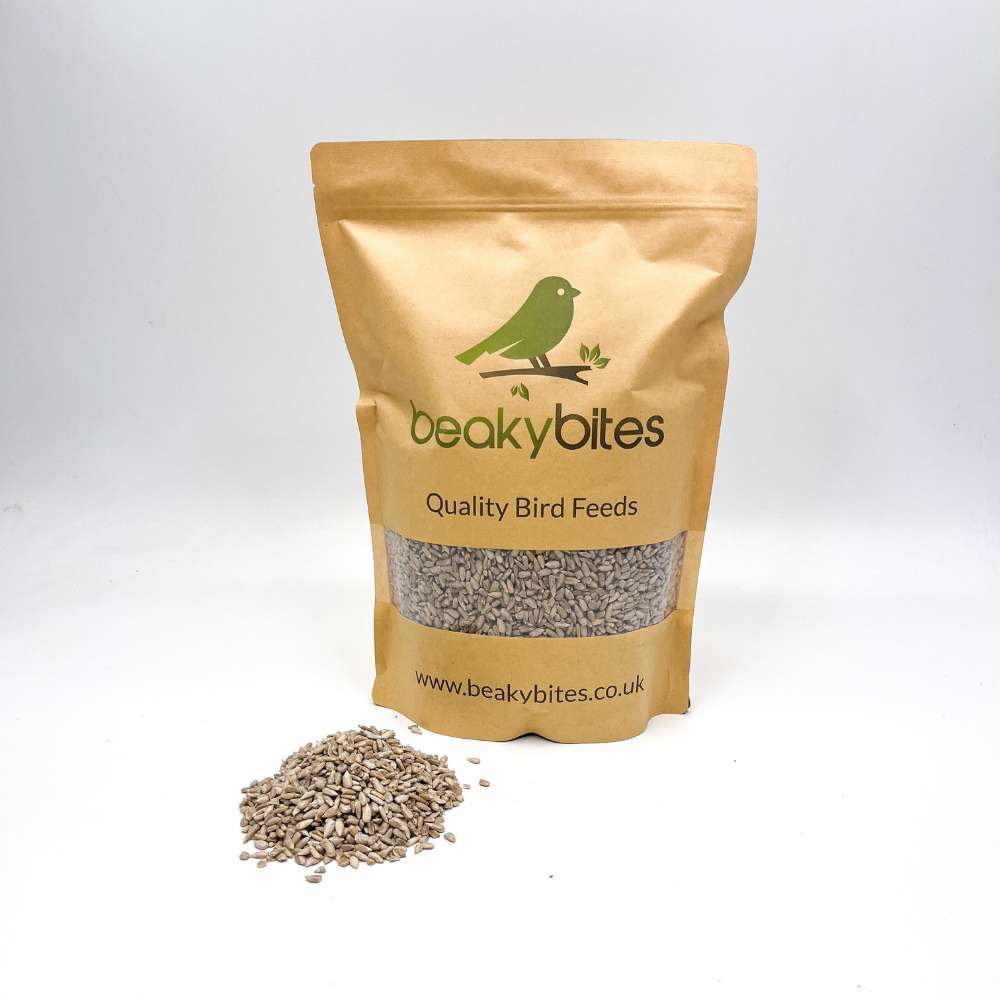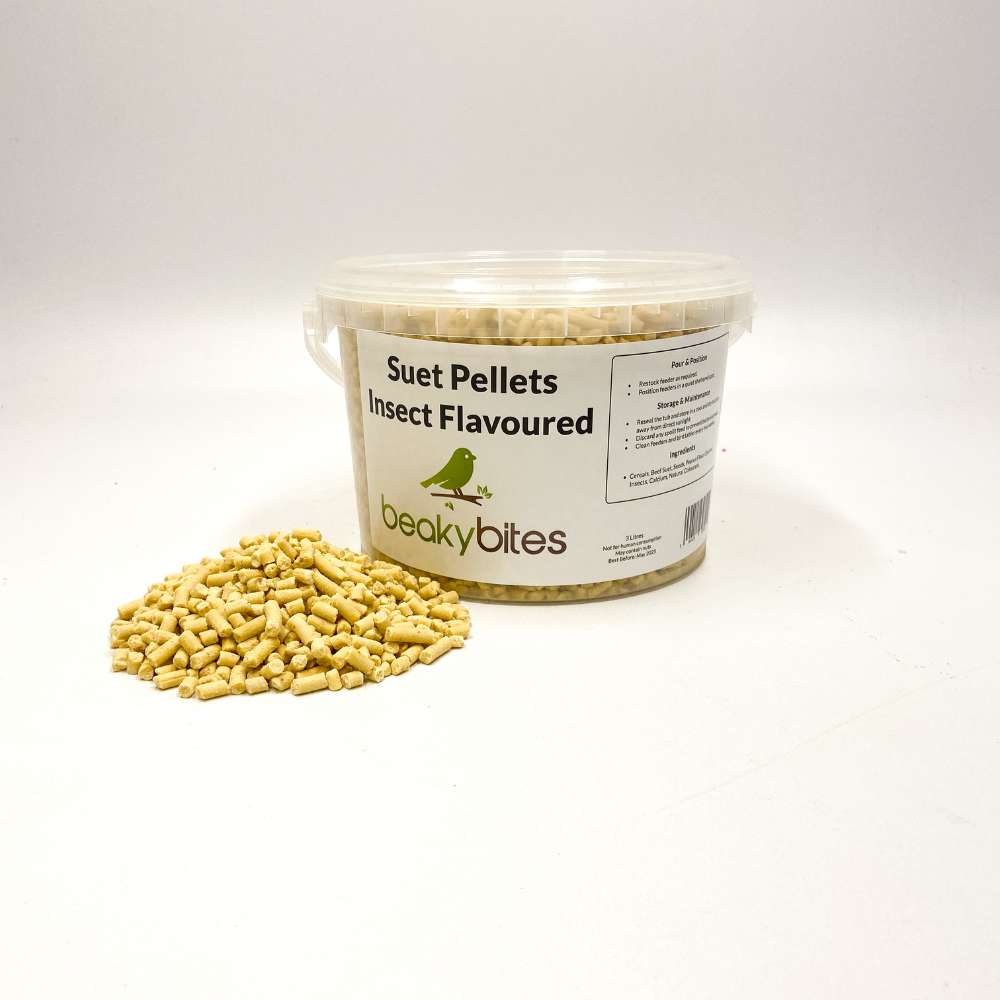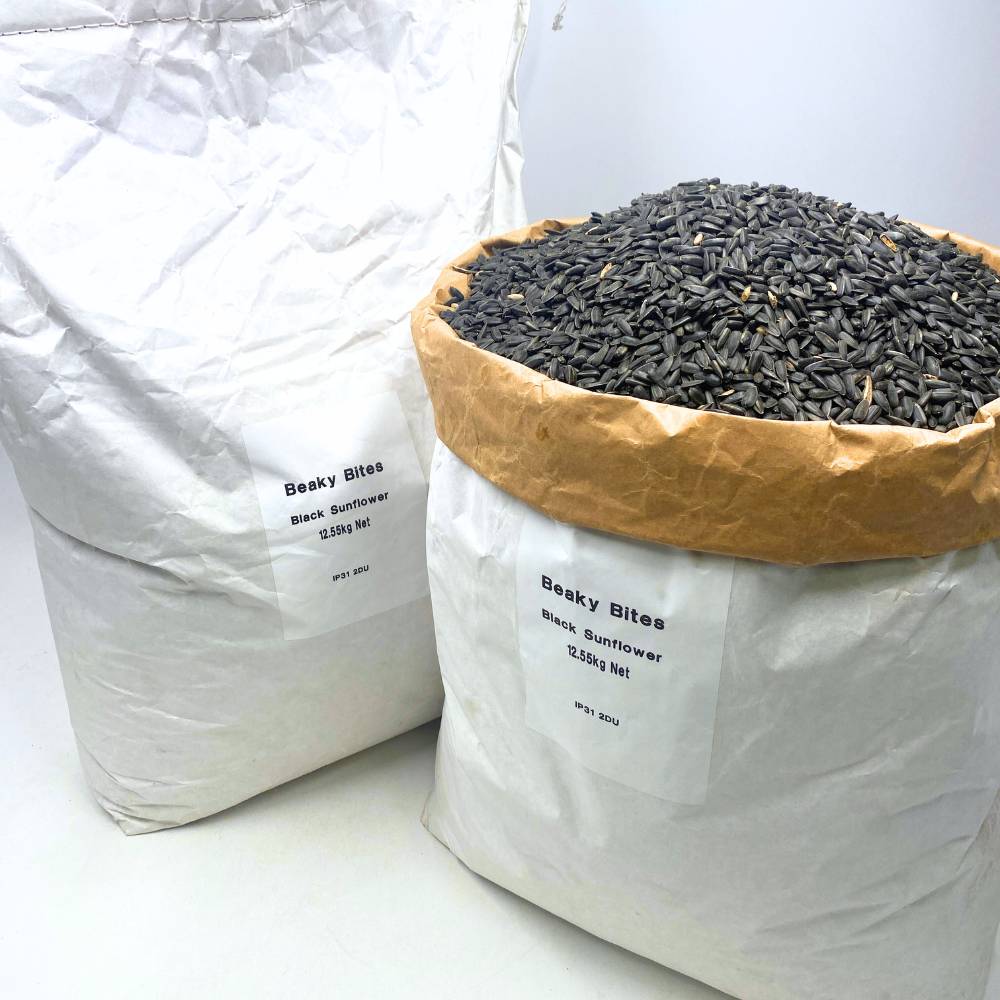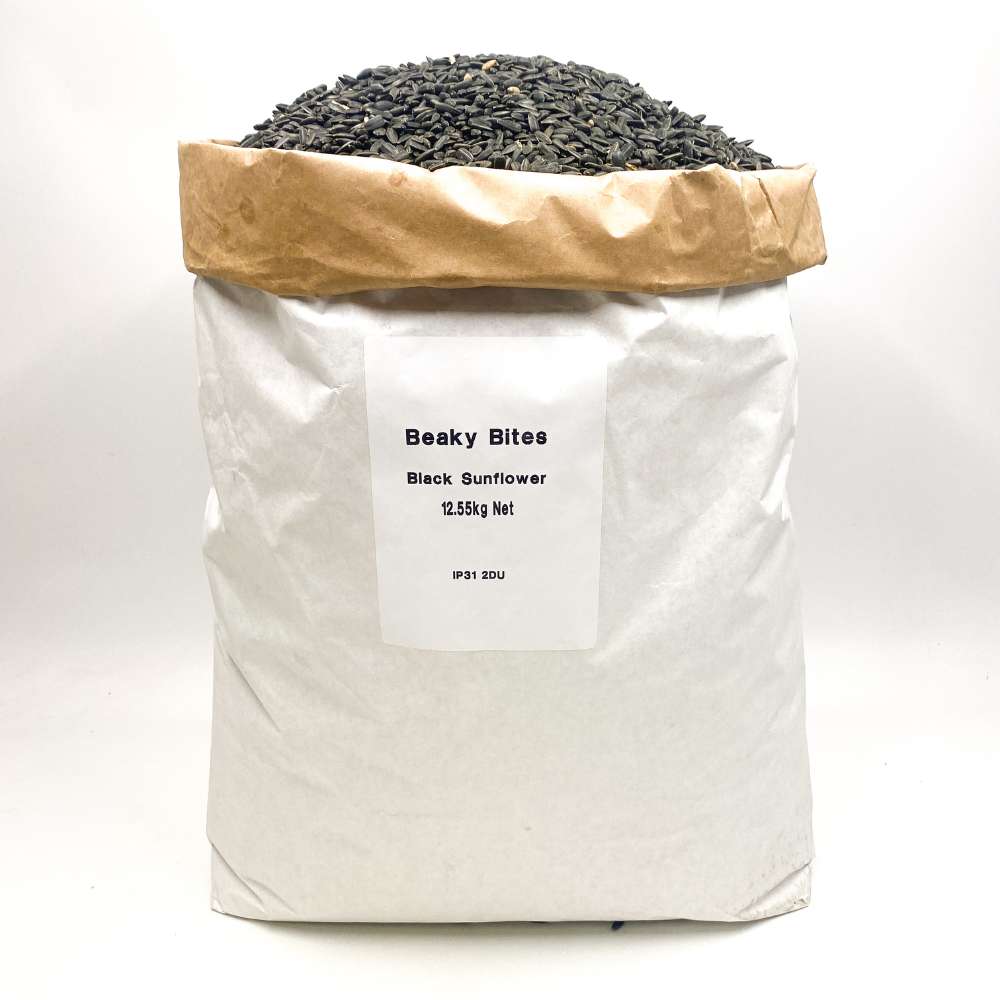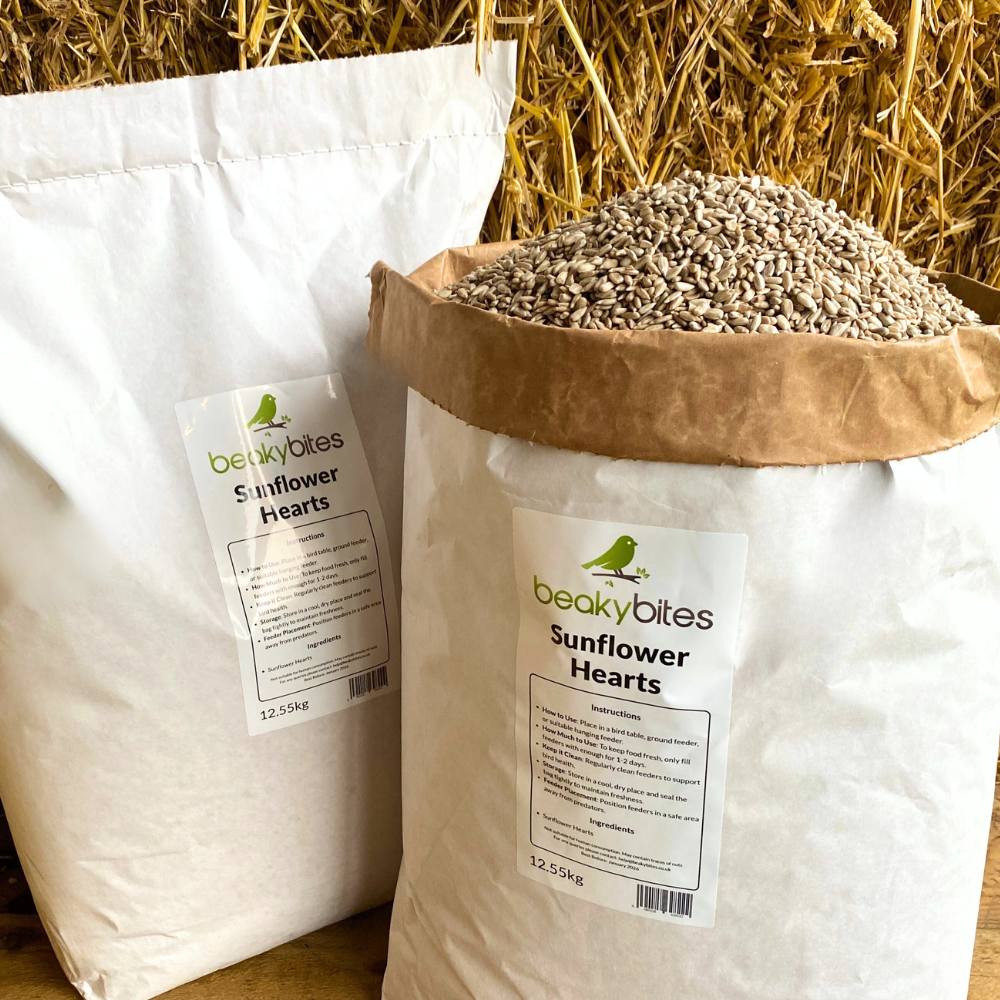Bird Fact File: Green Finch

Welcome to our bird guide series brought to you by Beaky Bites! In each post, we'll take a closer look at a beloved UK garden bird to help you better understand and appreciate these amazing birds. From identifying distinct features to discovering their favourite foods and nesting habits, this series aims to provide an overview of our feathered wildlife.
Let's Meet the Green Finch
Greenfinch Fact File | |
|---|---|
| Size: | 15cm, head to tail |
| Wingspan: | 26cm |
| Weight: | 28g |
| Colours: | Green, Grey, Cream, Blue, Black, White & Yellow |
| Eggs: | 4-6 eggs per brood, 2 broods a year |
| Nesting: | Evergreen shrubs. Using twigs, moss and grass |
| Population Status: | Red Listed |
The Greenfinch, a lively and colourful presence across Europe, Asia, and parts of North Africa, is well known for its vibrant green and yellow plumage. This sociable bird is often spotted in woodlands, gardens, and parks, making it a favourite among birdwatchers. Its Latin name is Chloris, and it belongs to the Fringillidae family, which also includes other familiar finches. There are around 1 million breeding pairs in the UK, however, that is declining in recent years, and so the Greenfinch is becoming a less common sight, making each visit to the garden all the more special.

Appearance and Behaviour
Greenfinches are beautiful birds with bright plumage that pops out in any environment. Males and females have green bodies, yellow wing bars and a sturdy conical beak for cracking open seeds. Males are greener than females, females are slightly duller. Juveniles look like the adults but are generally more subdued in colour.
Greenfinches have a varied diet depending on the season, seeds, buds and berries. In spring they will eat young plant buds, in autumn and winter they will eat seeds so they are frequent visitors to feeders filled with sunflower seeds, peanuts and suet pellets. Their strong beaks are perfect for cracking even the toughest seeds.
Greenfinches are social and chatty, often seen in small groups. They are adaptable birds, they can be found in gardens, parks, woodlands and hedgerows. Although not as territorial as some species, males will sing a distinctive twittering song to attract mates in breeding season. Outside of breeding they are often seen in mixed species flocks, joining other finches to forage especially in winter. In gardens their boldness and social nature make them a joy to see as they sit confidently on feeders.

Where do They Hang Out and Eat?
Greenfinches are clever feeders and adapt to the seasons. In spring and summer they eat seeds, buds and the odd insect to give them the energy to raise their young. You may see them hopping around trees and bushes or flying up to get to seeds and buds and sometimes even taking small insects if they can.
In autumn and winter as natural food sources dwindle Greenfinches eat seeds and berries and are regulars at garden feeders. They love sunflower seeds, peanuts and suet pellets and use their strong beaks to crack open seeds with ease. Their visits to feeders bring a splash of colour and cheer in the colder months.
Greenfinches are found in many types of habitat, from gardens and parks to woodlands and hedgerows. They love areas with lots of shrubs and trees which provide food and nesting sites. A garden with feeders offering seeds, dried mealworms and suet will attract these confident birds. Watching a Greenfinch’s antics and listening to its chirping is a joy for any bird enthusiast.

Breeding and Nesting
Greenfinches start breeding in early spring, around April and have one brood a year but can have a second if food is plentiful. A typical clutch is 4-6 eggs which the female incubates for around 12-14 days. After hatching both parents feed the chicks seeds, buds and occasional insects for a balanced diet. The young stay in the nest for about two weeks before fledging.
During breeding season Greenfinches become quite territorial, males use their song and display flights to mark their territory and attract a mate. Once a pair have a territory they’ll stay in it especially as the chicks grow and demand more food.
The female Greenfinch builds the nest, weaving together twigs, grass and moss into a cup shape. She’ll add softer materials like feathers and animal fur for extra comfort and warmth. Nests are usually in dense shrubs, hedges or small trees to protect from predators and the elements so the young can develop until they can fly.

Attracting Them to Your Garden
Greenfinches love seeds, berries and buds so if you have a garden that offers these natural food sources then they will definitely visit. They visit feeders regularly especially in the winter months but you can help them even more by planting native shrubs and trees that produce seeds and berries all year round. Feeders filled with high energy foods like sunflower seeds, peanuts and suet pellets are a real treat for Greenfinches, especially in autumn and winter when natural sources are scarce.
Suet pellets and sunflower hearts are a great addition to any garden as they are full of fats and energy to help Greenfinches and other birds keep their strength during the harsh winter months. Offering sunflower hearts in feeders or on feeding platforms means they have a constant supply of food when natural supplies of seeds and berries are scarce.
Creating a habitat with native trees, shrubs and plants that offer year round food and shelter is especially important during the breeding season (spring to summer). Greenfinches love gardens with a mix of cover for nesting and space to forage so providing dense shrubbery and open areas will make them feel at home. Installing a nest box will also encourage them to breed in your garden and you’ll get to see their family life up close.
Greenfinches like native plants that produce seeds and berries and feeders with sunflower seeds and suet. That’s food, shelter and nesting space.
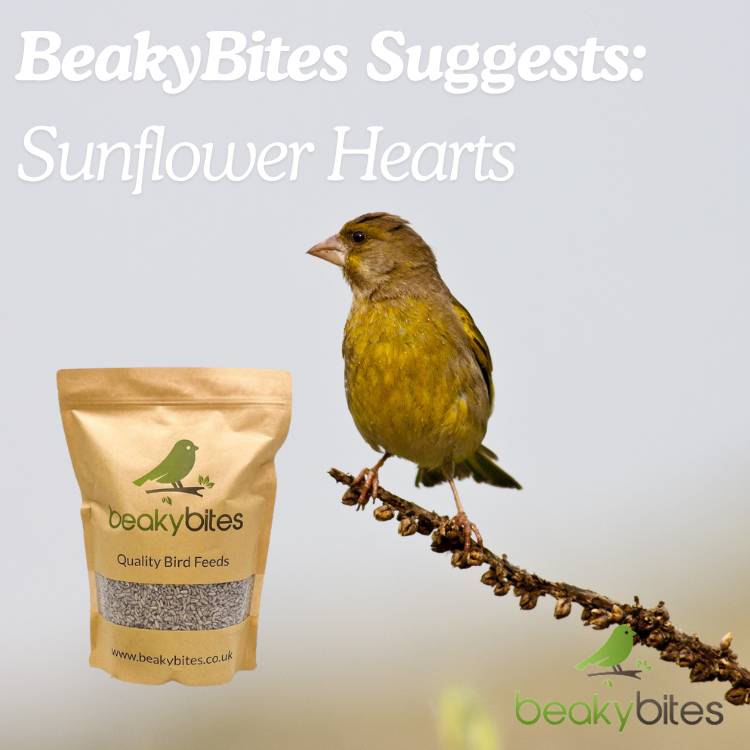
Conclusion
Greenfinches love a garden with seeds, berries and suet and shrubs and trees that produce seeds and buds. They also like dense shrubs or nest boxes nearby. By adding these you can attract Greenfinches to your garden and a splash of green and chatty fun to your outdoor space.
Whether you're an experienced bird enthusiast or just starting out, welcoming great tits into your garden is a delightful and rewarding experience. Stay tuned for the next post, where we'll discover another fascinating UK garden bird!
Frequently Asked Questions
Why are Greenfinch populations declining, and how can I help support them?
- Answer: Greenfinch populations are declining due to habitat loss and diseases, and you can help by planting native plants and providing food and clean water.
Where do Greenfinches typically build their nests?
- Answer: Greenfinches usually build their nests in dense shrubs, hedgerows, or small trees for cover and protection.
Do Greenfinches stay in the UK year-round, or do they migrate?
Answer: Most Greenfinches are resident in the UK year-round, but some may migrate short distances during harsh winters.
What types of feeders are best for attracting Greenfinches?
- Answer: Feeders with sunflower seeds, peanuts, and suet pellets, such as tube or platform feeders, are best for attracting Greenfinches.
Are Greenfinches social birds, and do they flock with other species?
- Answer: Yes, Greenfinches are social and often form small flocks, sometimes foraging with other small birds.


